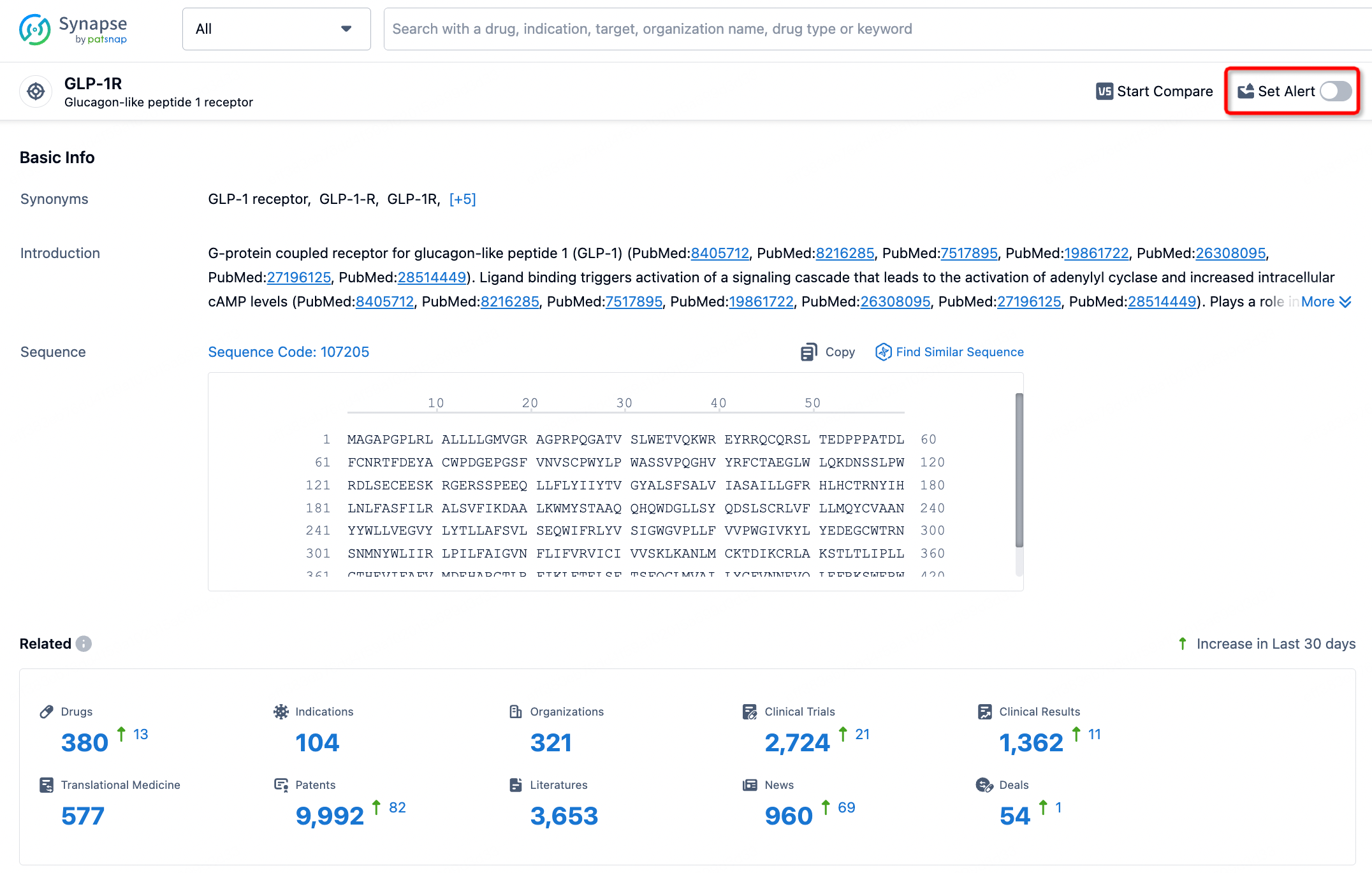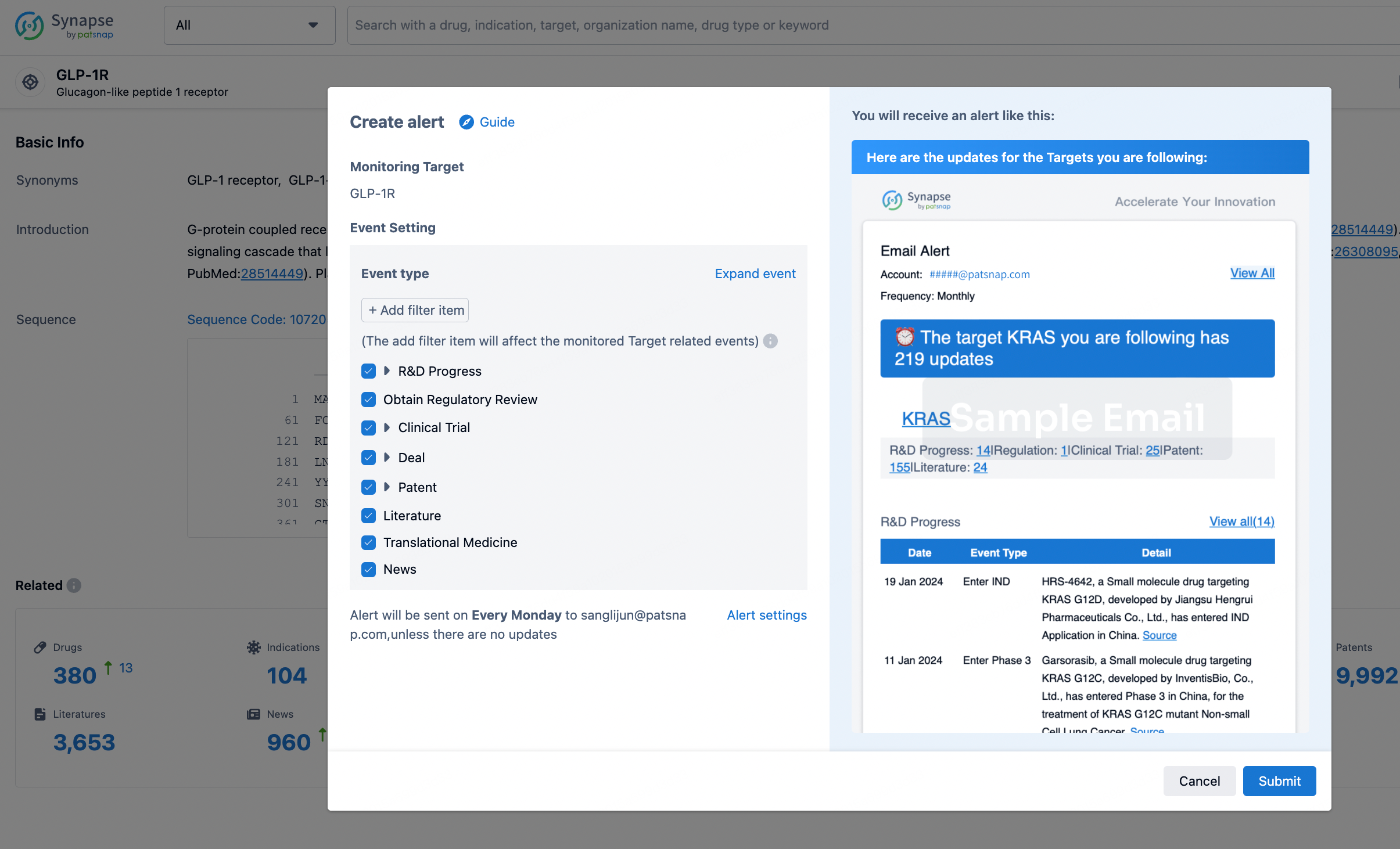Request Demo
What are POLA1 inhibitors and how do they work?
21 June 2024
Introduction to POLA1 Inhibitors
POLA1 inhibitors represent a fascinating area of research and development in the realm of medical science, particularly in the treatment of cancer. POLA1, or DNA polymerase alpha catalytic subunit, is a critical enzyme involved in the initial stages of DNA replication. Given its essential role in cell division, the inhibition of POLA1 has emerged as a promising strategy to impede the proliferation of rapidly dividing cells, such as cancer cells. This blog post delves into the workings of POLA1 inhibitors, their mechanisms, and their potential applications in modern medicine.
How do POLA1 Inhibitors Work?
To understand how POLA1 inhibitors work, it's essential to first grasp the function of POLA1 in the cell cycle. DNA polymerase alpha is responsible for synthesizing the RNA-DNA primer that initiates DNA replication. This primer is crucial for the elongation of the DNA strand by other polymerases. By inhibiting POLA1, the synthesis of this primer is disrupted, leading to stalled DNA replication. This disruption can induce replication stress and DNA damage, eventually triggering cell death through apoptosis or other cell death pathways.
POLA1 inhibitors specifically target the active site of the POLA1 enzyme, binding to it and preventing it from interacting with the DNA template and nucleotide substrates. This binding is typically highly selective, ensuring that the inhibition is effective without significantly affecting other cellular processes. The design of these inhibitors often involves sophisticated techniques in medicinal chemistry and molecular biology to achieve the necessary specificity and potency.
One of the key challenges in developing POLA1 inhibitors is ensuring that they can effectively penetrate cancer cells and maintain their stability and activity within the cellular environment. Researchers often employ various drug delivery systems and chemical modifications to enhance these properties, making the inhibitors more viable as therapeutic agents.
What are POLA1 Inhibitors Used For?
The primary application of POLA1 inhibitors currently lies in cancer therapy. As cancer cells are characterized by their rapid and uncontrolled division, they are particularly vulnerable to interventions that disrupt DNA replication. By inhibiting POLA1, these agents can selectively target and kill cancer cells while sparing normal cells that divide at a slower rate. This selectivity is crucial for minimizing the side effects typically associated with conventional chemotherapy.
Several preclinical studies have demonstrated the efficacy of POLA1 inhibitors in various types of cancer, including solid tumors and hematological malignancies. For instance, research has shown that POLA1 inhibitors can sensitize cancer cells to other treatments, such as radiation and DNA-damaging agents, by exacerbating DNA replication stress. This synergistic effect holds promise for combination therapies that could be more effective than single-agent treatments.
Beyond cancer, POLA1 inhibitors have potential applications in other diseases characterized by aberrant cell proliferation. For example, certain autoimmune conditions and viral infections involve rapid cell turnover, and targeting POLA1 could provide a novel therapeutic approach. However, these applications are still largely theoretical and require extensive research to establish their feasibility and safety.
Another intriguing potential use of POLA1 inhibitors is in the realm of anti-aging research. Since POLA1 plays a role in cellular proliferation and genome maintenance, modulating its activity could influence the aging process at the cellular level. While this idea is still in its infancy, it opens up exciting possibilities for future studies.
In conclusion, POLA1 inhibitors represent a promising class of therapeutic agents with the potential to revolutionize cancer treatment and beyond. By specifically targeting the DNA replication machinery, these inhibitors can effectively hinder the proliferation of cancer cells, offering a targeted approach with potentially fewer side effects than traditional therapies. Ongoing research and clinical trials will determine the full scope of their applications and pave the way for new, innovative treatments in the future.
POLA1 inhibitors represent a fascinating area of research and development in the realm of medical science, particularly in the treatment of cancer. POLA1, or DNA polymerase alpha catalytic subunit, is a critical enzyme involved in the initial stages of DNA replication. Given its essential role in cell division, the inhibition of POLA1 has emerged as a promising strategy to impede the proliferation of rapidly dividing cells, such as cancer cells. This blog post delves into the workings of POLA1 inhibitors, their mechanisms, and their potential applications in modern medicine.
How do POLA1 Inhibitors Work?
To understand how POLA1 inhibitors work, it's essential to first grasp the function of POLA1 in the cell cycle. DNA polymerase alpha is responsible for synthesizing the RNA-DNA primer that initiates DNA replication. This primer is crucial for the elongation of the DNA strand by other polymerases. By inhibiting POLA1, the synthesis of this primer is disrupted, leading to stalled DNA replication. This disruption can induce replication stress and DNA damage, eventually triggering cell death through apoptosis or other cell death pathways.
POLA1 inhibitors specifically target the active site of the POLA1 enzyme, binding to it and preventing it from interacting with the DNA template and nucleotide substrates. This binding is typically highly selective, ensuring that the inhibition is effective without significantly affecting other cellular processes. The design of these inhibitors often involves sophisticated techniques in medicinal chemistry and molecular biology to achieve the necessary specificity and potency.
One of the key challenges in developing POLA1 inhibitors is ensuring that they can effectively penetrate cancer cells and maintain their stability and activity within the cellular environment. Researchers often employ various drug delivery systems and chemical modifications to enhance these properties, making the inhibitors more viable as therapeutic agents.
What are POLA1 Inhibitors Used For?
The primary application of POLA1 inhibitors currently lies in cancer therapy. As cancer cells are characterized by their rapid and uncontrolled division, they are particularly vulnerable to interventions that disrupt DNA replication. By inhibiting POLA1, these agents can selectively target and kill cancer cells while sparing normal cells that divide at a slower rate. This selectivity is crucial for minimizing the side effects typically associated with conventional chemotherapy.
Several preclinical studies have demonstrated the efficacy of POLA1 inhibitors in various types of cancer, including solid tumors and hematological malignancies. For instance, research has shown that POLA1 inhibitors can sensitize cancer cells to other treatments, such as radiation and DNA-damaging agents, by exacerbating DNA replication stress. This synergistic effect holds promise for combination therapies that could be more effective than single-agent treatments.
Beyond cancer, POLA1 inhibitors have potential applications in other diseases characterized by aberrant cell proliferation. For example, certain autoimmune conditions and viral infections involve rapid cell turnover, and targeting POLA1 could provide a novel therapeutic approach. However, these applications are still largely theoretical and require extensive research to establish their feasibility and safety.
Another intriguing potential use of POLA1 inhibitors is in the realm of anti-aging research. Since POLA1 plays a role in cellular proliferation and genome maintenance, modulating its activity could influence the aging process at the cellular level. While this idea is still in its infancy, it opens up exciting possibilities for future studies.
In conclusion, POLA1 inhibitors represent a promising class of therapeutic agents with the potential to revolutionize cancer treatment and beyond. By specifically targeting the DNA replication machinery, these inhibitors can effectively hinder the proliferation of cancer cells, offering a targeted approach with potentially fewer side effects than traditional therapies. Ongoing research and clinical trials will determine the full scope of their applications and pave the way for new, innovative treatments in the future.
How to obtain the latest development progress of all targets?
In the Synapse database, you can stay updated on the latest research and development advances of all targets. This service is accessible anytime and anywhere, with updates available daily or weekly. Use the "Set Alert" function to stay informed. Click on the image below to embark on a brand new journey of drug discovery!
AI Agents Built for Biopharma Breakthroughs
Accelerate discovery. Empower decisions. Transform outcomes.
Get started for free today!
Accelerate Strategic R&D decision making with Synapse, PatSnap’s AI-powered Connected Innovation Intelligence Platform Built for Life Sciences Professionals.
Start your data trial now!
Synapse data is also accessible to external entities via APIs or data packages. Empower better decisions with the latest in pharmaceutical intelligence.


